K.R. Nilsen
THE YELLOWSTONE TRAPS
NUMBER 1
For my daughters, Shyloah and Willow, who share the wonders of this small planet with me.
The geological chaos depicted in the pages of this novel is based on scientific research regarding two volcanic super-eruptions of the 1,500-square mile Yellowstone caldera inside Yellowstone National Park in Wyoming, one that overwhelmed the continent 2.1 million years ago, and a similar catastrophic event that occurred 640,000 years ago.

A tourist map of Yellowstone National Park, circa 1900.
Earthquake Swarms Rattle Yellowstone National ParkBy Colin Bradendon, United Press International
CHEYENNE, WYOMING Scientists with the U.S. Geological Survey at Yellowstone Volcano Observatory reported over the weekend the re-emergence of frequent earth tremors within the 1,500 square mile volcanic caldera that lurks under much of Yellowstone National Park, similar to the unusual outbreak of earthquake activity the week of Christmas-New Years, 2009.
Officials monitoring the parks geology also report pronounced geothermal activity, specifically the upwelling of great volumes of superheated water into the depths of Yellowstone Lake, the largest high-elevation freshwater lake in the continental United States.
Yellowstone Supervising Geologist Wesley Crouch issued a statement yesterday indicating that the frequency of seismic activity is substantially above customary background levels. The strength of the earthquakes is near or exceeds levels that can be sensed by people within the parklands, the largest measuring 3.8 as recorded by seismometers along the eastern margins of Yellowstone Lake just before midnight Saturday. He said that although tremors well below the threshold of human senses were quite common in the parklands, multiple tremors that could be experienced directly by humans were rare.
Yellowstones park-wide caldera is the largest non-marine volcanic structure on Earth. Scientists believe the caldera erupts violently at intervals of between 600,000 and 800,000 years. According to park officials, no volcanic eruption of any sort has been recorded within the Yellowstone caldera for 70,000 years and the caldera has not erupted catastrophically for at least 640,000 years. Small, localized hydrothermal steam explosions do rock the park on average once a year, and large steam explosions that can produce shallow craters in the earth occur about once every other century.
Pressed about the potential dangers posed by the increased seismic activity, experts express little concern about the return of elevated earthquake chatter to Yellowstone and have issued no warnings to the public. However, park officials have closed additional acres of land in and around the popular Norris Geyser Basin because of elevated surface temperatures. Some areas of Norris have been off limits for more than a decade. Now, additional property and thermal features have been added to the list of closures.
Meanwhile, internet forums and chat rooms are rumbling with speculation about Yellowstones latest behavior. Armageddonline.org is bristling with messages that call Yellowstone earthquakes precursors to a civilization-crippling super-eruption. Other sites and blogs post text from those who see Yellowstone as a triggering mechanism that could bring about worldwide tribulation this decade, as foretold by the Mayan long-count calendar, by the prophesies of the medieval seer Nostradamus and as foretold in Revelations in the New Testament of the Bible as well as in passages in half a dozen other sacred texts around the world.
I wont speculate about such things, said geologist Crouch when asked about the popular prattle on the internet. But I can assure you, the public has about as much chance of being harmed by an eruption at Yellowstone as being flattened by a hunk of space junk.
Earths neighbor swelled as it breached the horizon over Yellowstone Lake. In full phase, the moon saturated the landscape throughout Yellowstone National Park with chalk white. The midnight shine reflecting off the high-elevation lake waters was piercing enough to make a nocturnal mammal squint.
Elizabeth Embree slipped along a game path out to Plover Point, on a southern peninsula jutting into the lake, taking care to scramble over a washboard of fresh shallow fractures in the earths surface. At the waters edge, among otter tracks, she nestled down on the weathered rock and surf rubble and raised her nose to sniff the chilly atmosphere. She pulled long slow drafts of air into her nostrils. Somewhere in the ether she sensed a wisp of stinking hydrogen sulfide. Born female, she could detect smells twice as readily as her male counterparts. She knew that the otter playing and fishing at the waters edge had an olfactory sense a hundred times more acute than her own. The otter, she suspected, could tell her a thing or two about what was going on somewhere in the moonglow over the grand watery expanse.
Lizs olfactory apparatus was the first instrument she would employ on her new assignment. The supervising geologist at the Yellowstone Volcano Observatory made calls to the Bureau of Mines, the University of Utah at Provo and the Cascades Volcano Observatory in Vancouver, Washington to see if the institutions could recommend someone who specialized in working in aquatic hydrothermal environments. The geologist and the parks resident biologist had plenty of reason to suspect some sort of anomaly was beginning to affect the health of the 136-square-mile lake. The men concluded that someone with specialized talent ought to come down and spend time in and around the largest body of water in the two million-plus acre park. Officials recommended a professor of geophysics from the Massachusetts Institute of Technology whom some were already familiar with. Liz got the call.
The dew point passed and a film of moisture collected on cooling surfaces. Liz rubbed the slick into her facial skin and into the corner of her eyes where the few hairline wrinkles were becoming more persistent now that she was approaching forty. The woman was as tall as any man alive during the American Revolution and as sinewy as pioneer women walking in the wheel ruts of Oregon-bound wagon trains. She pulled her lean frame forward on her stomach, flipped her coal black ponytail behind her, blinked her ice-green eyes clear and extended a hand into the lake water.
Wyoming winters could pull temperatures down to frightening lows, as abysmal as minus forty. The cryogenic days always left an indelible mark on the lakes and rivers of Yellowstone; they ran as cold as the devils blood everywhere, except where a few were warmed by geothermal hot springs and effluent from the geyser basins. Yellowstone Lake always averaged a frosty forty-one degrees Fahrenheit. Liz expected her long slender fingers to plunge into ice water and be throbbing within the minute. The cool caress of June-warm pond water was not expected. She raised an eyebrow. Huh.
The geophysicist sniffed the night air again and began a methodical scan of the near shores of the twenty-mile-long lake. Trying to focus her eyes in the glare of reflected moonlight, she fixed her gaze on the forests to the southeast. Along the shoreline of the lake basin in all directions, the evergreens built a bootblack wall of shadows. Far to her right, to the south, the trees cast the silhouettes of skeletons.
Northward, the lake ran to an infinite horizon more than a dozen miles away. She could make out nothing distinct over the distance. The light seemed to be scattered and diffused, while the dark images a few miles directly across the lake exhibited razor-sharp outlines. She studied the dull mirage intently. On such a clear, cool fall night, with no ground fog and on the edge of a lake of deep, frigid waters, she thought she ought to be able to see much farther. In a few days, she speculated, she might know why her vision was truncated. For now, her hunch would do: heat! The northern expanses of the lake, she thought, were even warmer, perhaps much warmer, than where she was perched.

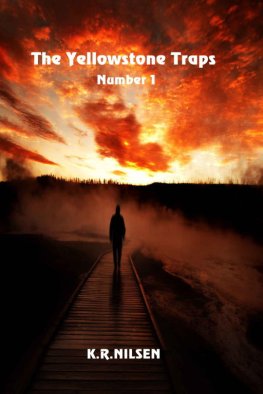

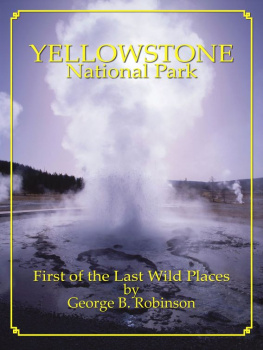
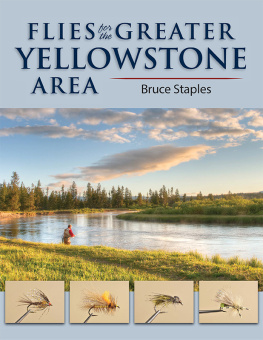
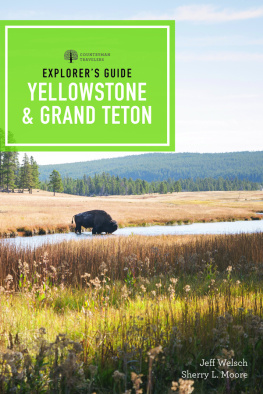
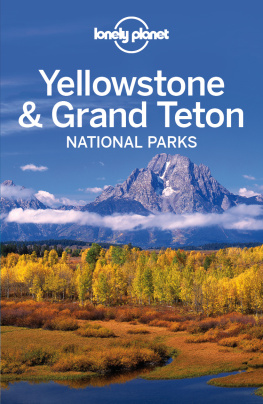

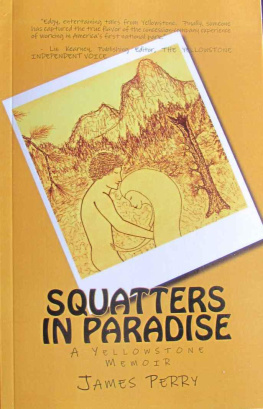
 A tourist map of Yellowstone National Park, circa 1900.
A tourist map of Yellowstone National Park, circa 1900.